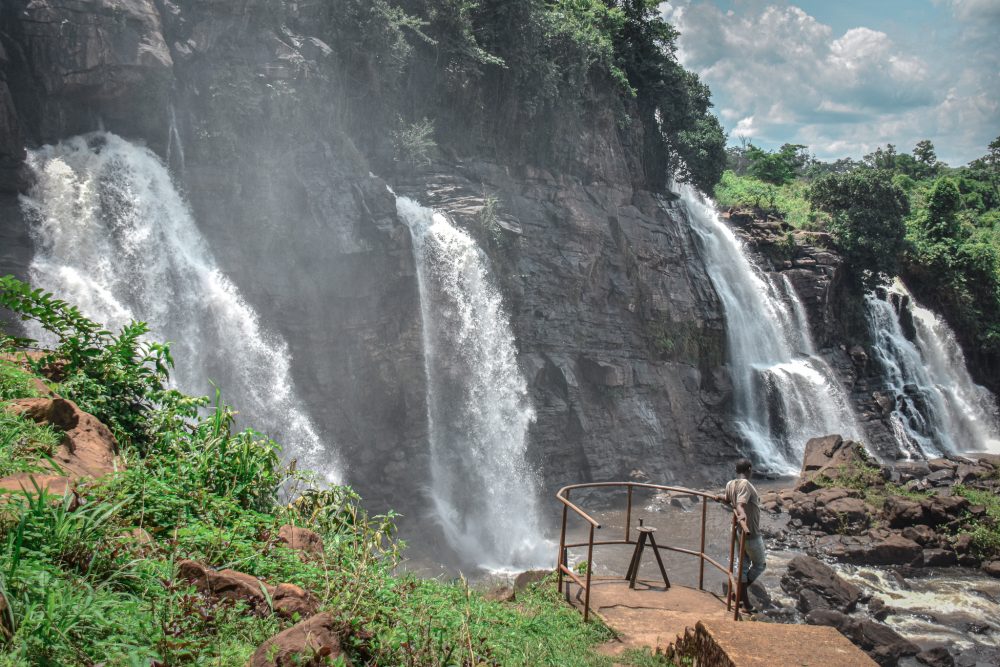Visiting Bangui, Central African Republic, Just Months After Being Under Siege from Rebels
May 2021: I wanted to visit the Central African Republic (CAR) to see with my own eyes if it was as dysfunctional as everyone said. I was sold on the CAR when I first watched a documentary about a Danish journalist, who in the CAR obtained a pygmy assistant and purchased a CAR diplomatic post to the country of Liberia in order to show how easy it was to smuggle diamonds via diplomatic pouches.
The CAR with its natural wealth-diamonds, gold, timber…. and relatively small population, has the potential to be a wealthy country. But instead it is one of the 5 poorest countries in the world. The reasons for this are simple; corruption, poor governance and for as long as the country has existed, foreign countries have meddled in its affairs helping to perpetuate its wars. Currently the country barely functions and its stability hangs by a thread.
Wars in the CAR are being fueled by religious division with the most recent war starting in 2013 between the government, Seleka, Muslim militias and mostly Christian anti-Balaka militias. Fighting came to a head recently in January when Seleka forces attempted to take the capitol of Bangui, shelling the city and attempting to overthrow the newly inaugerated president. The rebel forces were rappelled by security forces, United Nations (U.N.) troops, and Russian mercenary forces. In return for its defense, Russia is given favorable access to gold and diamond mines.
Just months after the most reason attempt by rebels to take the capitol, Bangui had become relatively tranquil, aside from a few dust ups occurring outside of the city. With this window of calm, my friends and I decided to visit Bangui. I initially had hoped to visit the World Wildlife Fund (WWF),Congo rainforest reserve of Dzanga-Sangha in the countries southwestern corner but it was closed due to Covid until the end of the year.
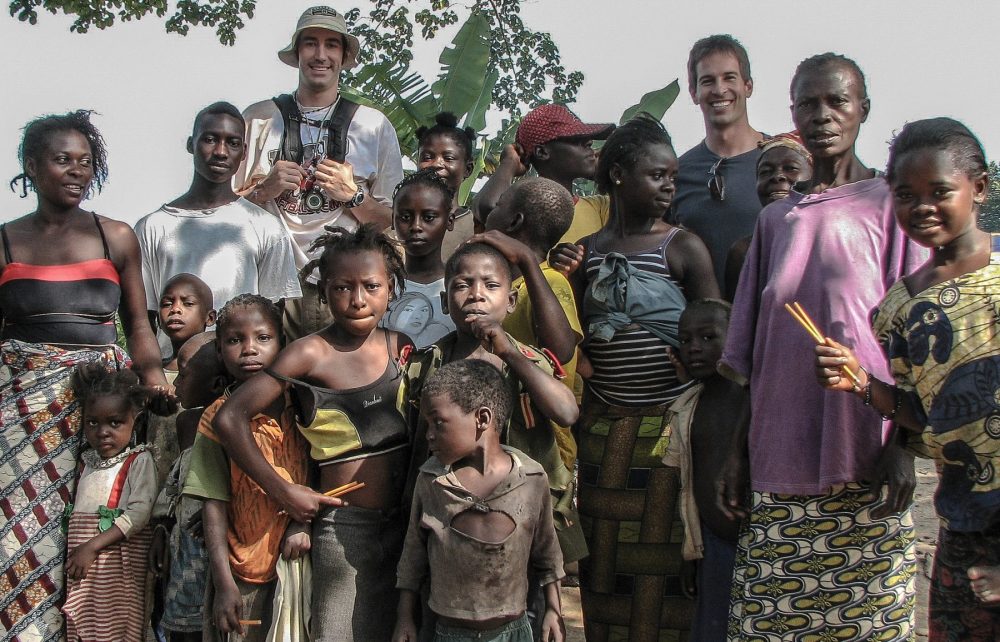
Random village along the Sangha River that my friends and I visited in 2007
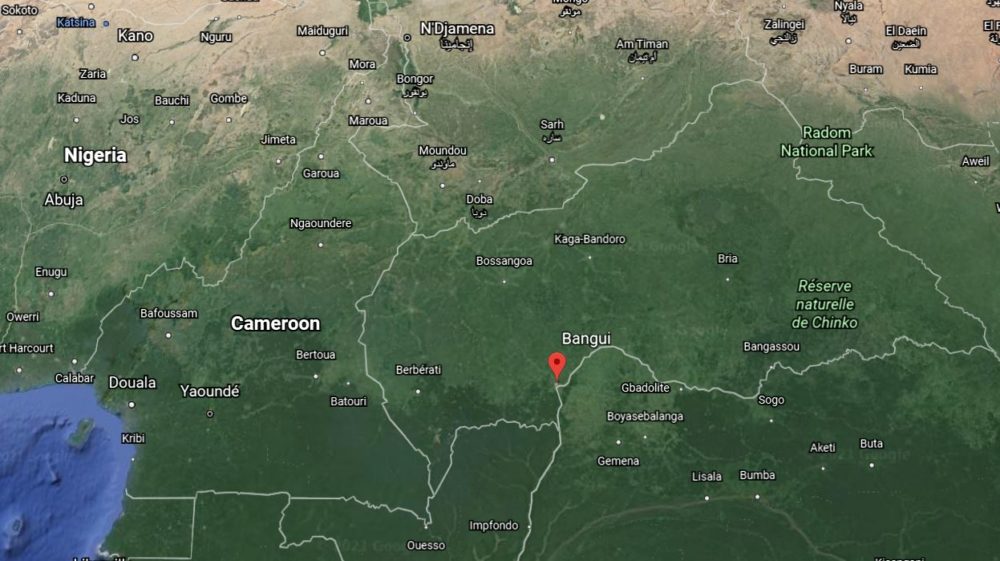
Map of CAR
Fourteen years ago I had also hoped to visit Dzanga-Sangha Reserve. Some friends and I hired a motorized pirogue in Cameroon and we intended to go to Dzanga-Sangha Reserve but the boats motor broke down in a thunderstorm leaving us stranded on the Sangha River in a lightning storm forcing us to abort any plans on visiting the park. Instead we visited a remote CAR village in the rainforests along the banks of the Sangha River that likely never had any foreign visitors before. We entire village welcomed us with a warm rockstar like reception
I knew that before going to the CAR, even though Bangui was currently calm, the CAR is volatile and sporadic fighting could break out at any time. Additionally corrupt police officers could pose just as big a safety threat as rebel militia. With this in mind, security was a top priority of the trip.

U.N Troops standing guard in Bangui.
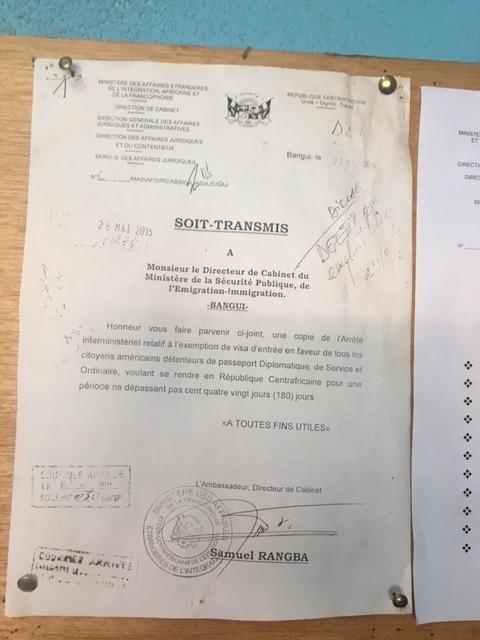
Secret shady document from the CAR government in 2015 stating Americans and a select few other nationalities do not need visas
The disorderly nature of the CAR began to show itself even before I arrived. When trying to determine if a visa was required, I received nothing but contradictory information. I called the CAR Embassy in D.C. and they advised me that I needed a visa. Yet a few other American travelers informed me that a visa was not needed and they shared a secret CAR government document that had been circulating around between travelers suggesting this. The scribbled up, lopsided document from 2015 needless to say is not very legitimate looking. I hoped to find something more reassuring from a more current and acceptable source since I had heard that airlines have been known to create trouble for travelers to the CAR even if a visa is not required.
I found out from a CAR based fixer that Americans did not need a visas but just to play it safe I decided to obtain a immigration approval letter or Message-Port in advance with the help of the CAR fixer. It was only 30 USD and worth the extra security.
Day 1: We flew ASKY airlines from Lagos-Lome-Douala-Bangui. Enroute to Bangui we flew over an endless sea of rainforest, which eventually opened up to the city of Bangui, with its ramshackle houses chaotically strewn across a hodpodge of dusty roads. Bangui is located on the Ubangi River just across from the Congo-DRC. Our flight arrived before nightfall, since the airport does not have functioning runway lights and as we taxied, we passed scores of aircraft skeletons abandoned off to the sides of the runway.
I pre-arranged a driver to pick us up at the airport to take us to our hotel, the fanciest and most secure hotel in the country-the Ledger Hotel-a Libyan owned hotel that only took cash as payment and could not be reached by phone or email in advance to make reservations.
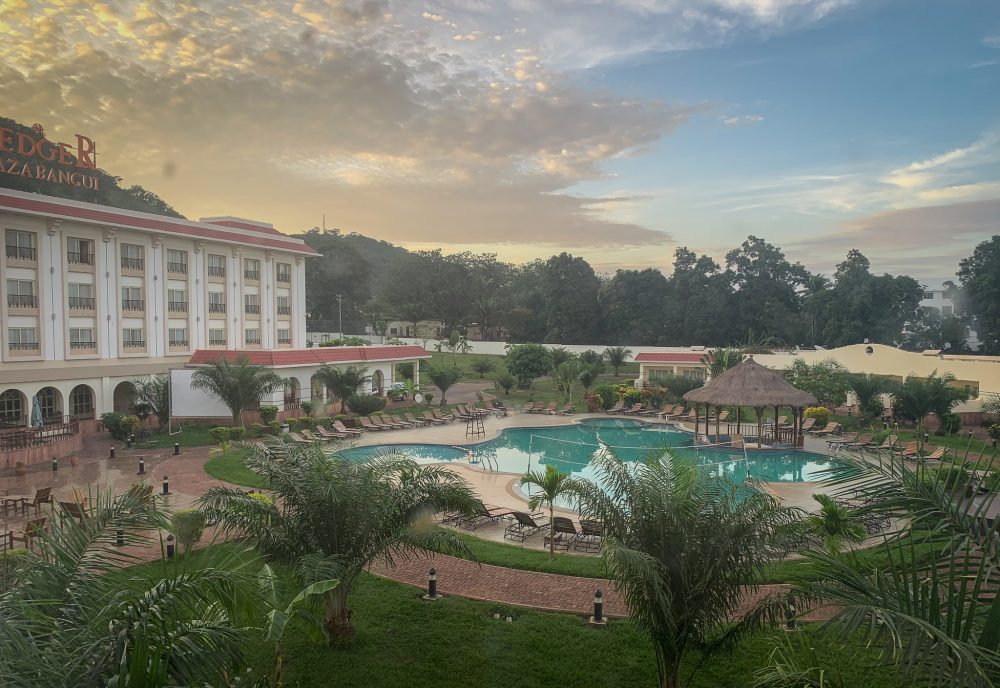
The Ledger Hotel-the kind of place where guests are presumed to be a journalist, NGO, corrupt government official, shady business man dealing blood diamonds or in the security industry
The check in process was time consuming because many of our dollars were rejected as unsuitable due to minor blemishes or an unwanted serial number. The goal was to check in to the hotel and meet an ex-pat friend, who lived in Bangui, before the early evening curfew. The curfew was imposed because rebel militia had been infiltrating Bangui at night and causing trouble so the govt decided it would be easier to find them if every one was cleared off the streets. Violators of the curfew were arrested or even possibly shot. On this particular night curfew was extended to a later time to allow Bangui citizens to attend a Russian propaganda film at a soccer stadium.
The Russians were trying to win over the hearts and minds of the citizens in their war against the rebels by promoting the idea that they were there to bring stability. When we arrived in Bangui, we could see Russian propaganda billboards, and even propaganda shirts were being handed out to the local populace . My expat friend was able to procure one for me.
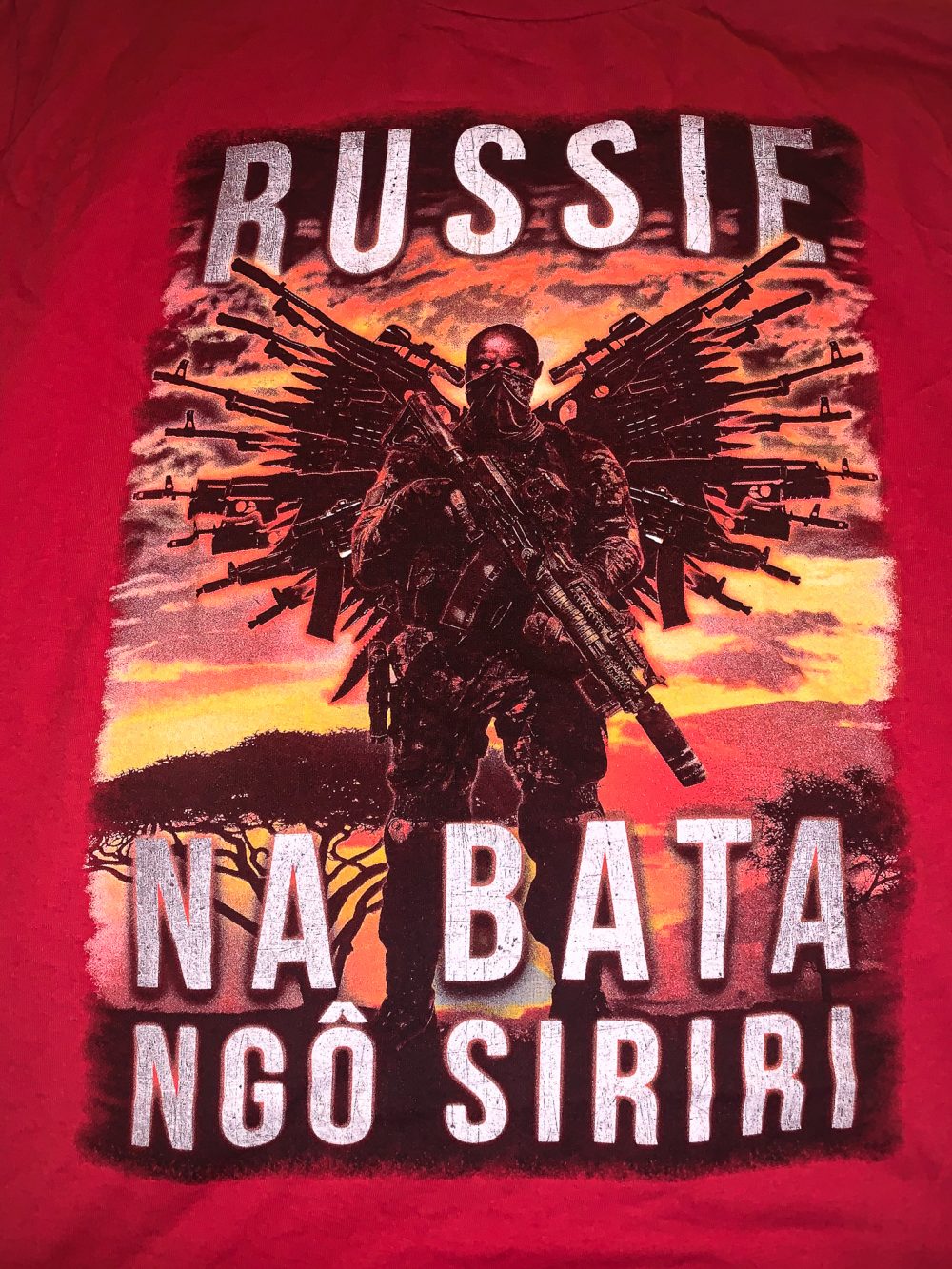
Propaganda shirt the Russians were handing out to Bangui citizens. The shirt depicts a Russian soldier as a valorous angel of death.

One of the many billboards in Bangui depicting security forces from Russia and France assisting CAR government forces
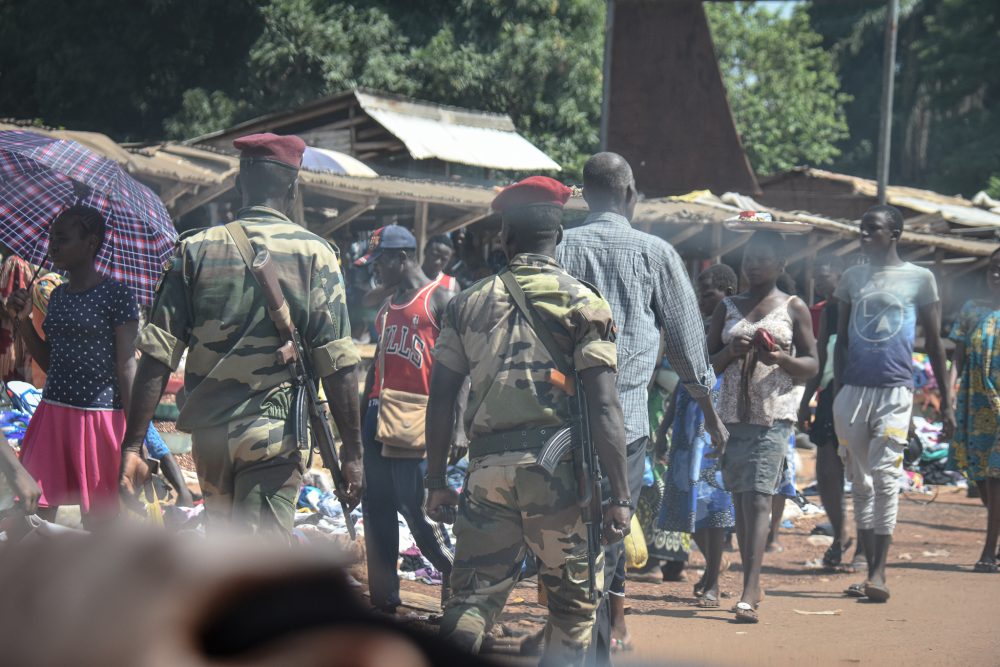
Street scene in Bangui
Day 2: The next day, we hired a vehicle and driver. Weary of what my expat friend had told me, in all his travels, Bangui was the place where he had received the most death threats and attempted pick pocket robberies, we didnt linger in the Bangui streets. Instead we decided to visit Boali Falls. Boali Falls is one of the largest waterfalls in CAR, which also has a hydroelectric plant powering most of the electricity in Bangui. The falls were the scene of heavy fighting between rebel forces and Russians back in January and the area had just recently become secure and free to visit. To get there we had to drive about 1.5 hours on a paved road that was suprisingly in good shape.
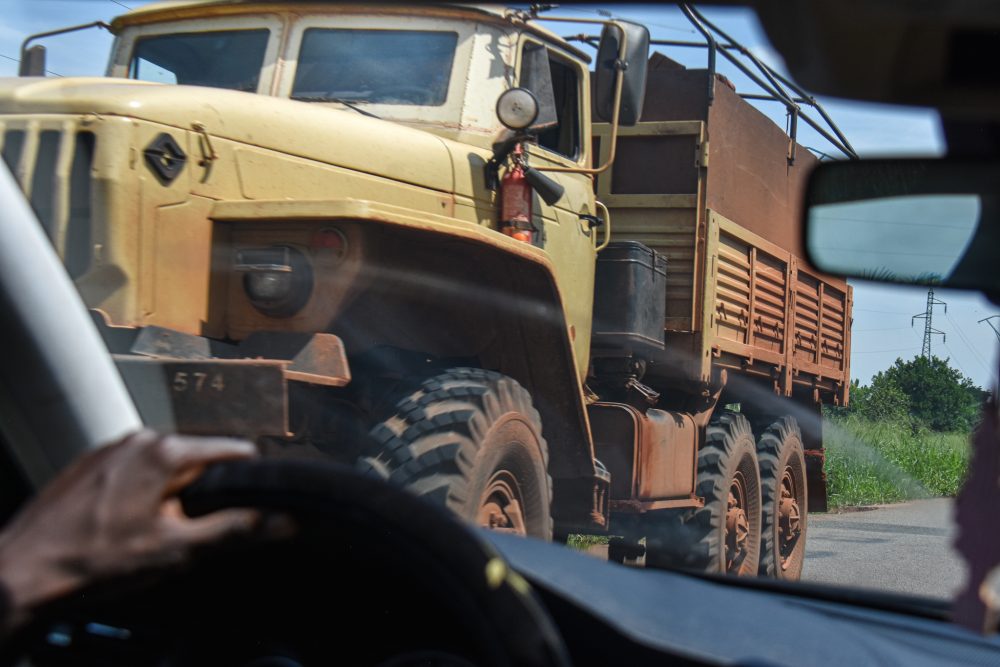
Military truck carrying Russian security forces
Rumbling along the road, we encountered huge military grade trucks full of Russian mercenary types. The Russians with the upperhand in advanced weaponery were reportedly pushing the rebels further away from the city . The Russians had military vehicles, drones, high grade artillery while the rag tag rebels only had small arms, and few vehicles. But sadly while I was in CAR the rebels did discover one very effective weapon- IED’s which managed to kill a few Russians and CAR troops. The Russians in order to treat their wounded reportedly evacuated the Bangui hospitol of all of its patients in order to clear room for their own.
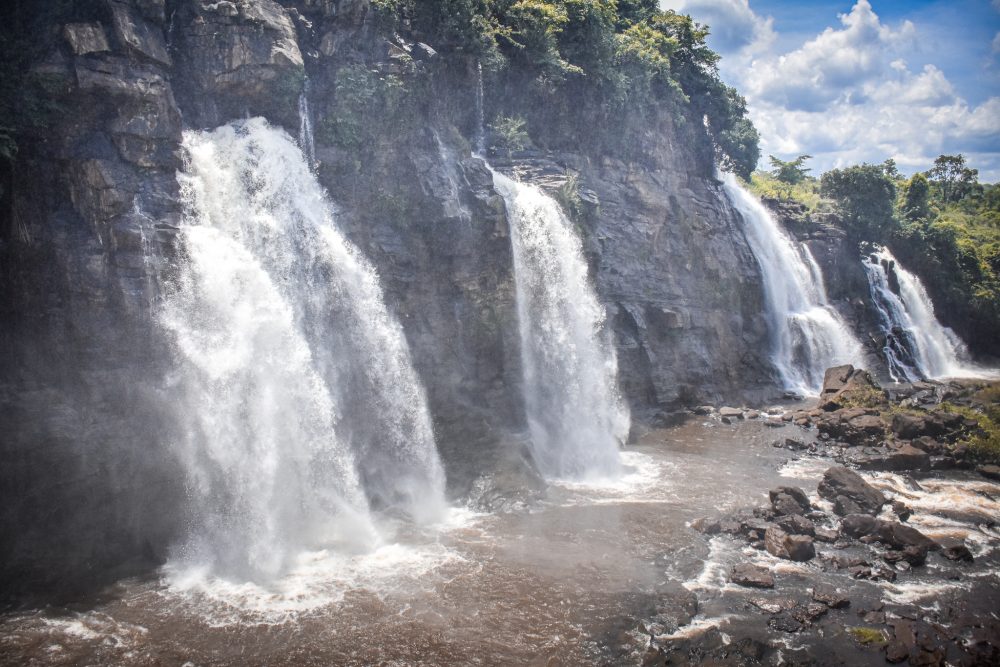
Photo of a local man standing before Boali Falls
Boali Falls was nice and relaxing but the most interesting thing we saw in all of CAR handsdown, was the packed to the gills, taxi bruss’s. These shared taxis pack people into every last square foot of space not only in the vehicle’s inside, but also in the trunk and the outside. It is truly an astonishing sight to see a vehicle driving down the road at full speed with people sitting on the windshield with their legs open just enough so the driver can see the road. I have seen cars packed with people in my travels but nothing quite like this.

Shared taxi packed with passengers

Shared taxi packed with passengers
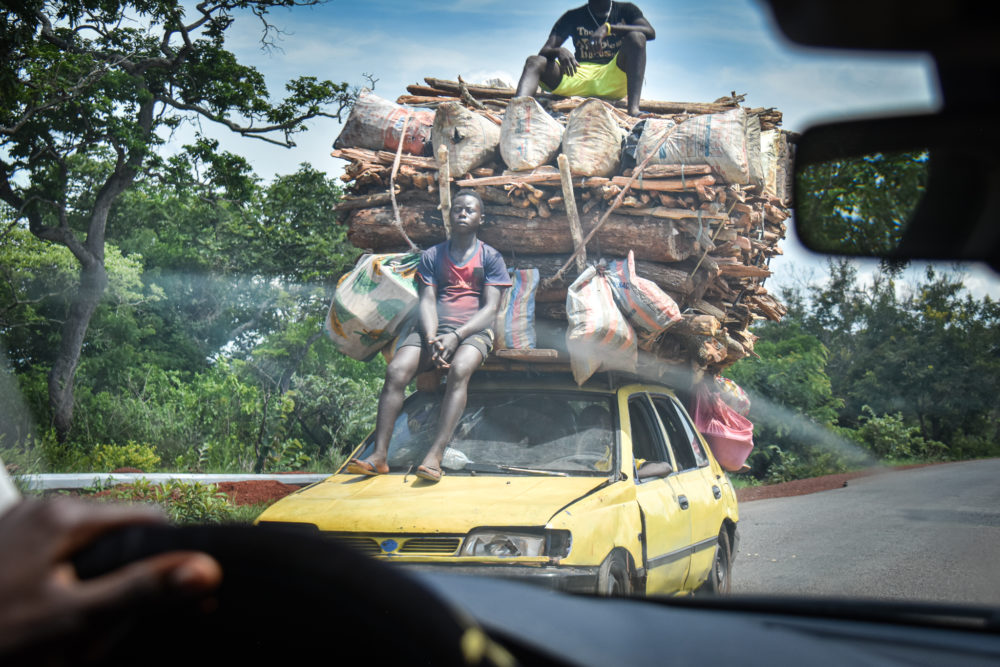
Taxibruss loaded with passengers and cargo. Sadly in impoverished countries like the CAR safety doesn’t sit very high on the priority list
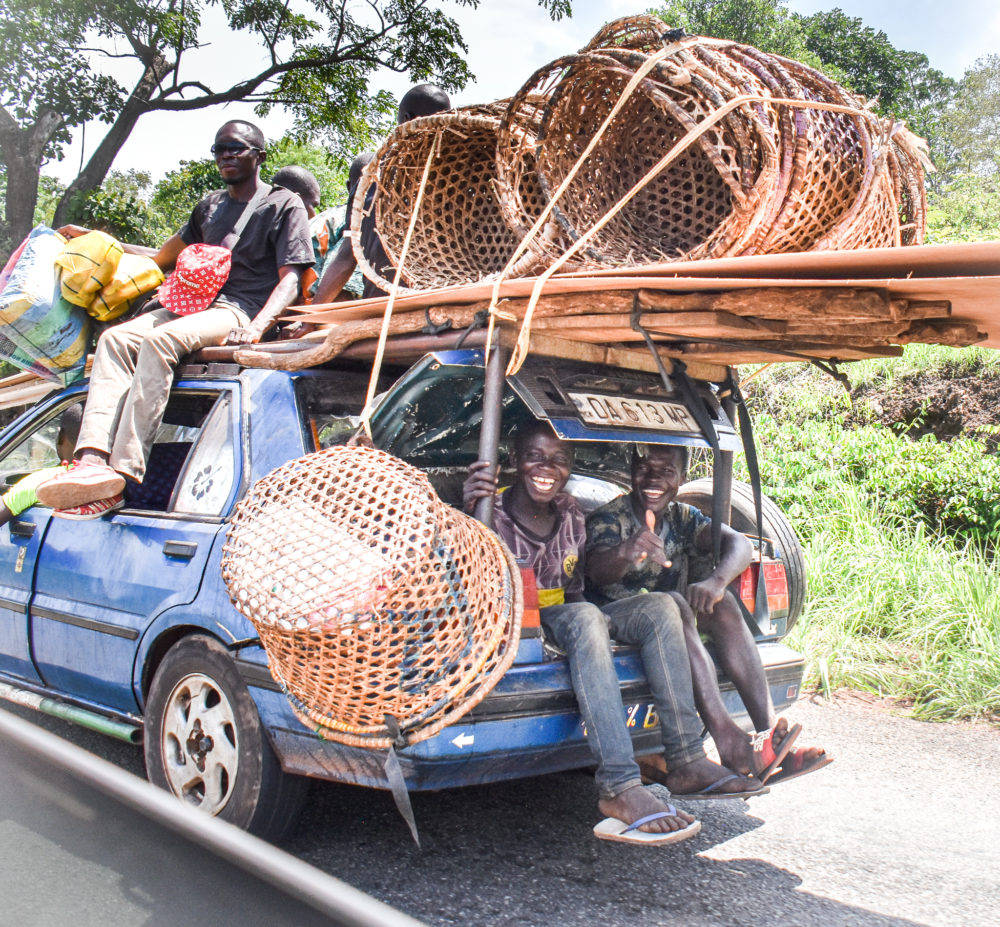
Never a boring vehicle in CAR
Day 3: On the morning of our departure, the CAR had one last surprise for us. Our same day Covid test results never arrived in my email inbox. Without these results, we would not be able to catch our flight and leave the country. I wasn’t worried about being positive since we all just tested negative a few days prior in Nigeria. This being the CAR however, it wasn’t hard to make some passing test results that were legitimate enough in appearance to convince airport officials to let us out of the country.

